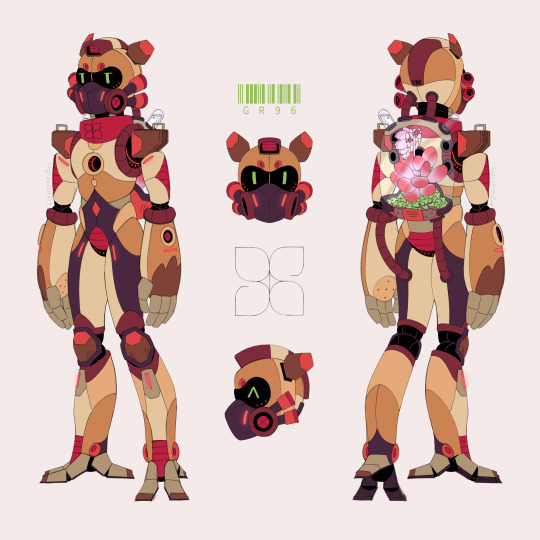#but i like to imagine a future where that energy could power full fledged robots :0
Explore tagged Tumblr posts
Text
GR96
@fusionspruntcityjournal

So how do you produce electricity with living plants? Simply by using the natural processes that already occur. In short: the plant produces organic matter via photosynthesis. Only part of this organic matter is then used for its own growth. The rest is excreted via the roots. Around the roots, bacteria feed on the organic matter and they release electrons. If you’re able to harvest the electrons into an electrode, you can couple the first electrode to a counter-electrode and build an electrical circuit, like in a battery. The electrons flow back into the natural system via the counter-electrode, so it’s completely circular. Because we use the natural processes around the plant, nature is not harmed. It works day and night, summer and winter. It only stops when the plant and its surroundings completely dry up or freeze over.
Sedum Oviferum
Sedum pachyphyllum is a ground-hugging succulent that spreads by rooting fallen stems and leaves. The succulent also goes by the names “Cerise Moonstones” or “Mauve Pebbles”. The short and stumpy round leaves have a light silvery-purple color; positioned at a right angles to the stem and curve upward, which in the wintertime, the tips of said leaves will turn into a notorious red.
Sedum Oviferum is a succulent that is very easy to grow and maintain. It is a resilient plant that can tolerate drought, moist and dry soils, and when given adequate exposure to sunlight and sufficient water, Cerise Moonstones will thrive outdoors. The Sedum Oviferum succulent grows at its best with regular exposure to sunlight. If Mauve Pebbles are planted in an area in a garden that gets plenty of sunlight per day, you will be rewarded with bright coloured leaves and flowers. In winter and early spring, Cerise Moonstones actively grow and produce blooms featuring red-orange petals and sepals that have the same pigmentation as the leaves. The flowers produced by Cerise Moonstones have a bell shape and a sugary fragrance.
Subterranean Clover
Trifolium subterraneum is also known as the subterranean clover (often shortened to sub clover), or subterranean trefoil. The plant's name comes from its underground seed development, a characteristic not possessed by other clovers. It can thrive in poor-quality soil where other clovers cannot survive.
This species is self-fertilizing, unlike most legume forage crops such as alfalfa and other clovers, which are pollinated by insects, especially honeybees. It is also grown in places where the extreme ranges of soil type and quality, rainfall, and temperature make the variable tolerances of sub clover especially useful.
Functionality
GR96 are powered by any plant of choosing on their back pod (the one we are going to discuss has a giant Sedum Oviferum and multiple sub clovers to operate) which is held in place by five strong suction cups. They’re manufactured for community gardens (strictly only one per garden), but they can also be bought by high class citizens for private properties, though at a way bigger cost since they’re financed by the city.
They can use their hands as scissors, shovels, and for watering (hence the big forearms, for storing the water), the latter which they do by dipping their hands in a bucket, opening the valve on their forearms so they can fill them up and releasing the water from the pinholes on their palms. Their “eyes” are actually a screen that can show plenty expressions, but the two circles above that peripheral screen are the real environmental sensors. They also have the same sensors on their ankles for inspecting the lower plants and ground without the need of kneeling, and their feet are shaped in a way so that weight is evenly distributed, lowering the chances of damaging a plant if they were to step on it. The ear like protrusions are small solar panels, used as backup energy (they don’t have any communication properties). Their speaker aka their “voice” is the mohawk-like structure on the top (which also has their series barcode 128 on the lower back), but when they speak there are these strips at the sides of the face mask that light up with the volume. The mask (non removable) has a set of pipes that are used for analyzing the air quality and humidity of the area surrounding them.
#my art#fusionsprunt#fusionsprunt oc#fusionsprunt clover#i’ll reblog this again later with their lore and alt design#the sedum oviferum is a fictional succulent i came up with since i couldn’t find one that i liked lmao#literally said fuck it it’s my oc i make the rules#[slaps a giant plant inside]#the energy gathering segment is based on a real article!#in its current state it can only power small leds#but i like to imagine a future where that energy could power full fledged robots :0
195 notes
·
View notes